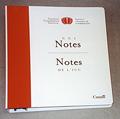Proper storage for museum collections should provide easy access to the collections while protecting the art objects in a safe and secure manner. Important concerns for safe storage are: adequate security, proper environmental conditions, selection of appropriate storage fixtures, and proper packing and support of artifacts in storage.
Storage areas should be clean, well ventilated and properly illuminated. Temperature and humidity levels and air quality must be monitored regularly. Appropriate fire protection should be installed. Illumination should allow staff access to the collection without causing damage to the collection. While stored, items should be in the dark at all times.
Objects within storage areas are packed, supported and stored in ways that can be either beneficial or deleterious to their condition. The following comments illustrate some basics of proper storage:
1. Small objects are best stored on shelves or in drawers. Steel shelving or drawers with a fused powder coating are good choices. Anodized aluminum is also good. Wood and wood products are generally not recommended because of the off-gassing of volatile components, primarily acids from wood and formaldehyde from adhesives.
2. All shelving should be padded to cushion the objects and reduce the risk of abrasion. Polyethylene Microfoam is the best padding material. Dust and light covers should cover open shelving units. Muslin lined with black polyester fabric makes an ideal dust and light cover.
3. Exhibition furniture, office records, publications and other non-collection material should be kept in a separate storage area for both safety and convenience.
4. Maps, documents and small objects are best kept in flat files in shallow drawers. Acid-free paper and glassine should be utilized as interleaving for paper documents. Glassine should be changed periodically as it turns yellow (it is not stable over the long term). Glassine is most commonly used to interleave chalk and pastel drawings.
5. Photographs and documents that are the same size or smaller than file cabinet drawers, may be stored in Mylar (a polyester) sleeves within acid free folders or envelopes. Care should be taken not to place too many pieces within a folder, causing them to be crushed against each other.
6. Clothing in sound condition is best stored on padded hangers in wardrobes, or if fragile, individually in shallow, acid-free boxes. This method will provide easy access and labeling, as well as minimize crushing and overcrowding.
7. Lift boxes, artifacts, equipment and furniture off the floor. All collections items should be at least six inches above the storage floor. This protects them from insects, moisture and cleaning equipment.
MS202: Museum Storage Facilities and Furniture
MS203: Museum Storage Techniqus
MS204: Materials for Storage and Display
MS201: Storage for Infinity: An Overview of Museum Storage Principles
Books and products we recommend:
 CCI Notes is the most important collection care publication a museum can acquire. A collection of over 90 technical leaflets written for a broad audience, topics in this continually expanding series range from "Removing Mould from Leather" to "Storage for Costume Accessories" and "Indoor Display of Industrial Collections." CCI Notes are illustrated, include supplier lists and a thorough bibliography. CCI Notes is available online at the CCI website.
CCI Notes is the most important collection care publication a museum can acquire. A collection of over 90 technical leaflets written for a broad audience, topics in this continually expanding series range from "Removing Mould from Leather" to "Storage for Costume Accessories" and "Indoor Display of Industrial Collections." CCI Notes are illustrated, include supplier lists and a thorough bibliography. CCI Notes is available online at the CCI website.
Note: this publication is not a compilation of the CCI technical bulletins.
Links to related information on other sites:
Cold Storage Facilities in the U.S.
http://palimpsest.stanford.edu/byorg/ abbey/an/an22/an22-7/an22-708.html
Cold Storage Handling Guidelines for Photographs
http://www.archives.gov/preservation/storage/cold-storage-photos.html
Why are so Many Artifacts in Storage?
http://www.mysticseaport.org/build/bo-storage.htm
The Cold Storage of Photographic Collections Using Conventional Freezer Technology
http://www.archives.gov/preservation/storage/photo-cold-storage.html
FIAF – Journal of Film Preservation
http://www.fiafnet.org/uk/publications/
Building a Small Cold Storage Vault
http://www.archives.gov/preservation/storage/cold-storage-vault.html
Storage Screens for Paintings (Conserve-O-Gram 12/1) – (An Adobe PDF file)
http://www.cr.nps.gov/museum/publications/ conserveogram/12-01.pdf
Storing and Handling Plaster Objects (Conserve-O-Gram 8/2) – (An Adobe PDF file)
http://www.cr.nps.gov/museum/publications/ conserveogram/08-02.pdf
Creating a Microclimate for Oversized Museum Objects (Conserve-O-Gram 4/4) – (An Adobe PDF file)
http://www.cr.nps.gov/museum/publications/ conserveogram/04-04.pdf
Storage Techniques for Hanging Garments: Padded Hangers (Conserve-O-Gram 4/5) – (An Adobe PDF file)
http://www.cr.nps.gov/museum/publications/ conserveogram/04-05.pdf
Storage Techniques for Canoe Paddles and Long-Handled Tools (Conserve-O-Gram 4/6) – (An Adobe PDF file)
http://www.cr.nps.gov/museum/publications/ conserveogram/04-06.pdf
Museum Collection Storage Space: Is an Insulated Modular Structure Right for your Collection? (Conserve-O-Gram 4/7) – (An Adobe PDF file)
http://www.cr.nps.gov/museum/publications/ conserveogram/04-07.pdf
Selecting Environmental Control Systems for Insulated Modular Structures (Conserve-O-Gram 4/8) – (An Adobe PDF file)
http://www.cr.nps.gov/museum/publications/ conserveogram/04-08.pdf
Determining Museum Storage Equipment Needs (Conserve-O-Gram 4/10) – (An Adobe PDF file)
http://www.cr.nps.gov/museum/publications/ conserveogram/04-10.pdf
Determining Museum Storage Space Requirements (Conserve-O-Gram 4/11) – (An Adobe PDF file)
http://www.cr.nps.gov/museum/publications/ conserveogram/04-11.pdf
Ring Supports for Pottery and Round-Based Objects (Conserve-O-Gram 4/12) – (An Adobe PDF file)
http://www.cr.nps.gov/museum/publications/ conserveogram/04-12.pdf
Planning a Research Space (Conserve-O-Gram 4/14) – (An Adobe PDF file)
http://www.cr.nps.gov/museum/publications/ conserveogram/04-14.pdf
Storage Supports for Basket Collections (Conserve-O-Gram 5/1) – (An Adobe PDF file)
http://www.cr.nps.gov/museum/publications/ conserveogram/05-01.pdf
Removing Wet Specimens from Long-Term Storage in Formalin (Conserve-O-Gram 11/1) – (An Adobe PDF file)
http://www.cr.nps.gov/museum/publications/ conserveogram/11-01.pdf
Storage Concerns for Geological Collections (Conserve-O-Gram 11/2) – (An Adobe PDF file)
http://www.cr.nps.gov/museum/publications/ conserveogram/11-02.pdf
Storage and Transport
http://www.stevekeller.com/steve/article_storagetrans.htm
Guidelines for Selecting Plastic Enclosures for Collections Storage
http://www.sos.mo.gov/archives/localrecs/conservation/notes/plastics.asp
Storage and Housing of Archival Collections
http://www.sos.mo.gov/archives/localrecs/conservation/notes/storage.asp
NIH storage tour
http://www.history.nih.gov/NIH_HistoryDay/tour/
Museum Storage Design
http://www.museum-storage-design.com/
Storage Systems
http://www.donnegansystems.com/Fine_Art___Museum_Storage.html
Donnegan Systems: Climate Controlled Cabinets
http://www.donnegansystems.com/Climate_Controlled_Storage.html
Donnegan Systems: Museum Drawer Cabinets
http://www.donnegansystems.com/Drawer_Cabinets.html
Conserve O Gram Listing (NPS) … 4/1 Museum Storage Cabinets 4/2 Dust Covers for Open Steel Shelving 4/3 Installing the Retrofit Gasket Kit 4/4 Creating a Microclimate for Oversized Museum …
www.cr.nps.gov/museum/publications/ conserveogram/cons_toc.html
